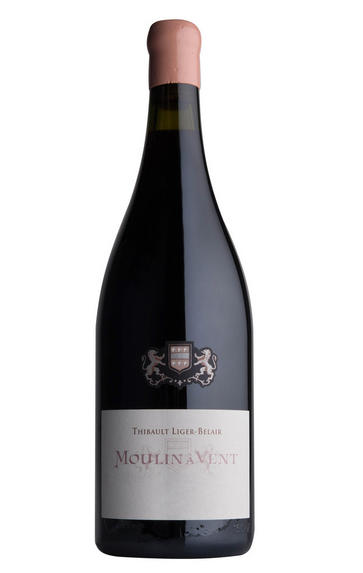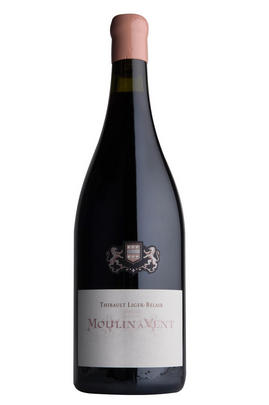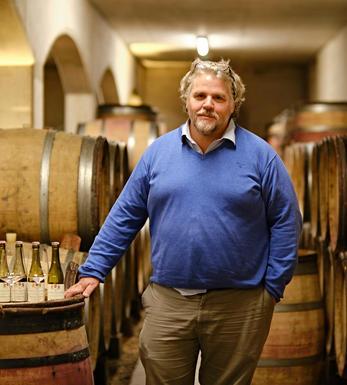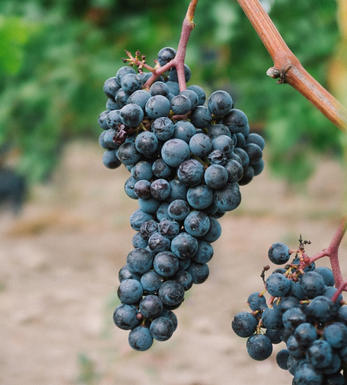
2016 Moulin-à-Vent, Champ de Cour, Thibault Liger-Belair, Beaujolais

About this WINE

Domaine Thibault Liger-Belair
Domaine Thibault Liger-Belair is part of our Spotlight on sustainability series. You can view the full range here.
Thibault Liger-Belair is cousin to Vicomte Liger Belair of Vosne Romanée. In 2001 he took over an old family property in Nuits St Georges, taking back the vines which had been contracted out to various share croppers, and leased a cuverie just down the road. The family jewels (his branch) consist of Richebourg, Clos de Vougeot and Nuits St Georges Les St Georges, to which he has added further vineyards and a few additional cuvées made from purchased grapes.The vines are now certified organic and farmed biodynamically, with horses used to plough the vineyards where possible. The grapes are rigorously sorted on a table de tri, then destalked and fermented without much punching down or pumping over. They will be racked once during the elevage, but Thibault is not afraid of reductive flavours at this stage which, he feels, adds to the eventual substance and complexity of the wine. The oak regime is not to exceed 50% new barrels but also not to use any barrels more than three years old. The natural style of Thibault’s wines is plump and full-bodied, though the benefits of his farming methods seem to be bringing a more mineral aspect to the fruit as well.
The natural style of Thibault’s wines is plump and full-bodied, though the benefits of his farming methods seem to be bringing a more mineral aspect to the fruit as well.

Moulin-à-Vent
Known as the ‘King of Beaujolais’ for its power, structure and longevity, Moulin-à-Vent is the most atypical of all the Beaujolais Crus, even if it is potentially the best. Its style is the antithesis of light, fluffy Beaujolais, and when fully mature (often at 10 years old or more) it resembles more a fine Burgundy, or even a Rhône, than Beaujolais. Named after the local windmill (which translates as moulin-à-vent in French) Moulin-à-Vent is a real vindication of the principle of ‘terroir’.
Moulin-à-Vent's neighbour Fleurie produces perfumed, silky, approachable wines, while Moulin-à-Vent, using the same grape (100% Gamay) and broadly the same vinification, makes wines that are meaty, tannic and intense, and need 2-3 years to mature. The only possible explanation, it seems, is the high proportion of iron and manganese in Moulin-à-Vent’s soil. Moulin-à-Vent tends to be most expensive of the Beaujolais Crus, although happily it is home to a number of very fine producers, so there is plenty for wine lovers to choose from.
Recommended producers: Jacky Janodet, Olivier Merlin.

Gamay
A French variety planted predominately in Beaujolais where it is the grape behind everything from light and often acidic Beaujolais Nouveau through to the more serious and well-structured wines from the 10 cru villages. It takes its name from a hamlet just outside Chassagne-Montrachet and was at one stage widely planted on the Côte d`Or. However it was gradually phased out due to its poor yield and supposed poor quality of its wines.
The majority of Gamay wines in Beaujolais are labelled as Beaujolais or Beaujolais-Villages and are deliciously juicy, easy drinking, gulpable wines. Of more interest are the Cru wines from the 10 villages in the north of the region where the soil is predominantly granitic schist and where the vines are planted on gently undulating slopes. These can be well-structured, intensely perfumed wines, redolent of ripe black fruits and, while delicious young, will reward medium term cellaring.
Gamay is also grown in the Touraine region of the Loire where it produces soft, well-balanced, gluggable wines for drinking young.


Buying options
Add to wishlist
Description
This vineyard is situated on the south side of the Moulin-à-Vent appellation, on a terrace below a large amphitheatre. The name refers to the field ( champ) into which water runs (cours). When it rains heavily, the topsoil from the slope above is washed into this vineyard, leaving a fascinating mix of pink, blue and yellow granite soil around a metre deep. Thibault compares this to Chambolle-Musigny; soft on entry, but with a firm grip at the finish. Forty percent whole- cluster was used here, and 15 percent new oak. There is a touch of spice on the nose, along with both red and black fruit. There is a spicy aniseed profile, suave and supple fruit in the middle and a very granitic finish. Gorgeous. Drink 2021-2030.
Adam Bruntlett, Wine Buyer
The excellence of Cru Beaujolais is something I have held dear for some time, but its ageing potential was first brought to my attention when I was served two Moulin-à-Vent wines from 1961 and 1962 produced by Camille Giroud. The freshness and complexity of these wines was simply astonishing and I have since made it something of a personal mission to return these great wines to their rightful place in the cellars and on the tables of the most discerning wine drinkers. The wines in our offer cover a range of styles; whole-bunch, de-stemmed, oaked, unoaked, elegant and floral, dense and structured. This almost endless variety and versatility is what is most fascinating about Gamay grown on Beaujolais’s volcanic soils. What the wines have in common, however, is that they all offer excellent value for money and great drinking pleasure.
wine at a glance
Delivery and quality guarantee